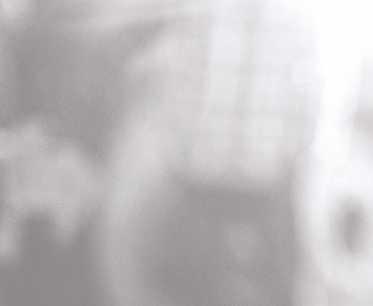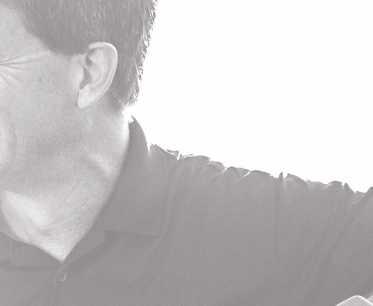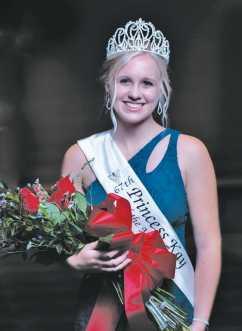
5 minute read
Farm and Food File


Advertisement








Ahead of her (and our) times a century ago
My grandmother was both a woman of by bus one July from southern Illinois her times and a woman far ahead of even through New England, Nova Scotia, and our times. For example, today’s electric Prince Edward Island before returning to cars would be a yawn for her; she rode in the Midwest through Quebec, Montreal, them “before the war.” Toronto and Detroit.
World War I, that is. Grandma (her The trip, to Grandma’s easy-to-please given name was Ruth) was born in 1902 nature, was “wonderful.” and lived 86 active years. One remarkably modern part of her
Grandma would also fit right in FARM & FOOD FILE daily life was that she rarely went to the with today’s pandemic-fueled, work-fromhome reality. In fact, no one in her By Alan Guebert grocery store. In fact, I can’t remember her ever buying groceries in person. family worked anywhere but from home. Her father, Henry, had the lonOPINION Instead, she’d telephone Voss General Store, just four blocks from her house, gest daily commute of any of them. His to give Edna, Dorothy or Ralph Voss livery stable and blacksmith shop was a just a few her weekly order. An hour or so later, a cardboard steps past the sour apple tree in their backyard. box of her goods would arrive on her screened back Another modern fact about my grandmother was that she never learned to drive anything with porch with a handwritten bill taped to an inside flap. wheels. Not a horse drawn buggy, motorized car, or Grandma bought the family’s meat the same way even a bicycle. She either walked or rode public from a local butcher in the small southern Illinois transportation — first trains, then mostly “the town of her entire life but only my youth. She Greyhound” — to where she needed or wanted to favored one butcher shop because it, like the Voss go. grocery store, was the “Lutheran” one.
And she went often and far. In the mid-1960s, my I doubt the animals knew the difference, but then-teenaged sister, Peggy, and Grandma traveled Grandma did and that made all the difference to
Brenna Connelly crowned
Mask and all, Brenna Connelly was crowned the 67th Princess Kay of the Milky Way at a private ceremony on Aug. 12.
Connelly, a 19-year-old college student from Byron, Minn., represented Olmsted County,. She is the daughter of Craig and Heather Connelly and attends the University of Minnesota - Twin Cities.

Princess Kay
Photos by Matt Addington Outgoing Princess Kay Amy Kyllo (left) surprised Brenna Connelly with her crown as Connelly was selected the 67th Princess Kay of the Milky Way during a private ceremony Aug. 12. Watching were runners-up Maggie Molitor of Rockville and Emily Benrud of Goodhue.

Throughout her year-long reign as Princess Kay of the Milky Way, Connelly will make appearances to help connect consumers to Minnesota’s dairy farm families and bring dairy to life through conversations, classroom visits and various speaking engagements. Connelly’s first official duty as Princess Kay will be to have her likeness sculpted in a 90-pound block of butter at the Dairy Building on the Minnesota State Fairgrounds on Aug. 13.
Emily Benrud of Goodhue, Minn., representing Goodhue County, and Maggie Molitor of Rockville, Minn., representing Stearns County, were selected as runners-up.
Katherine Maus of Freeport, Minn., representing Stearns County, along with Benrud and Connelly, were named scholarship winners. Molitor was also named Miss Congeniality. her.
Milk, butter and cream came to her with even less effort. For decades, her brother-in-law and the town’s milkman (Uncle Honey, who has appeared in this space several times before) delivered all to the same back porch two or three times a week.
Even more convenient for both was that they communicated in nickels, dimes and quarters. If Grandma needed more milk or cream, she’d just leave the correct amount of coins for the extra purchase on the porch steps the night before. Simple.
Simple isn’t a word anyone would use to describe today’s complex food network where milk, meat and other food move hundreds — sometimes thousands — of miles to get to our porches, pantries and plates.
This past spring we learned just how fragile this concrete and carbon spider web really is: In times of even modest strain, it can’t protect its customers or workers from scarcity, profiteering, sickness, and even death.
None of this would have been news to Grandma because she, her parents, two younger sisters, and baby brother all survived the flu pandemic of 1919. All also somehow survived other deadly diseases of their time — like scarlet fever, measles, the mumps, rheumatic fever, polio and pneumonia — when vaccines were more rare than cures.
I once asked my father, who was born in 1927, if he or Grandma ever worried about him being stricken with polio as a child.
Not really, he replied, because “I was only allowed to go to Grandpa’s blacksmith shop or with Uncle Honey on his milk route without asking. I didn’t go anywhere except school and church unless she allowed it.”
Hmm … social distancing, 1930s edition. I’m not surprised.
The Farm and Food File is published weekly through the United States and Canada. Past columns, events and contact information are posted at www.farmandfoodfile.com. v
Letters to the editor are always welcome.
Send your letters to: Editor, The Land P.O. Box 3169 Mankato, MN 56002 e-mail: editor@thelandonline.com All letters must be signed and accompanied by a phone number (not for publication) to verify authenticity.










